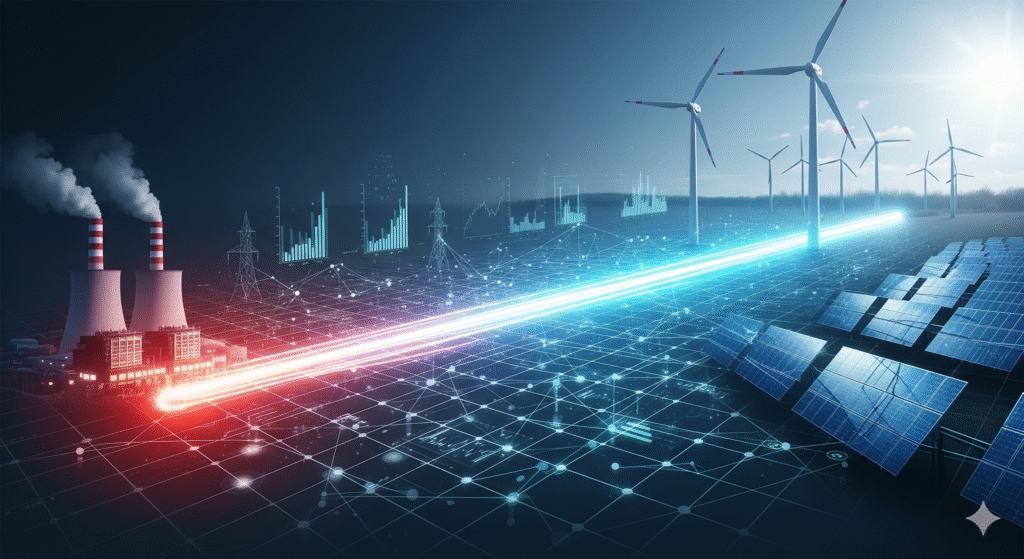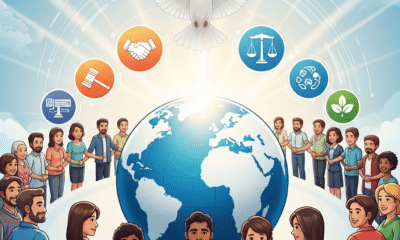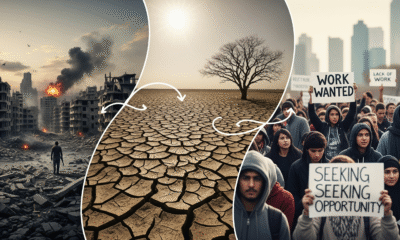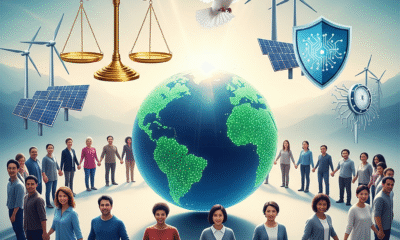Introduction
Climate change is no longer a distant concern—it is happening now. From devastating floods in Pakistan to wildfires in Europe and rising sea levels threatening Pacific islands, the effects of a warming planet are already shaping the global landscape. According to the Intergovernmental Panel on Climate Change (IPCC), the Earth’s temperature has already risen by 1.1°C compared to pre-industrial levels, and if unchecked, could surpass 1.5°C within the next decade.
Addressing climate change is not just about protecting the environment; it is about safeguarding economies, societies, and global peace. The key lies in sustainable development, where nations balance growth with environmental stewardship to ensure a liveable planet for future generations.
The Global Impact of Climate Change
Climate change touches every corner of the globe, creating ripple effects across sectors:
- Extreme Weather Events
- Increased hurricanes, droughts, and heatwaves damage infrastructure and agriculture.
- Example: The 2022 heatwave in Europe led to more than 60,000 heat-related deaths, highlighting the human cost.
- Food and Water Insecurity
- Shifting rainfall patterns disrupt farming, leading to food shortages.
- The Horn of Africa has experienced five consecutive failed rainy seasons, pushing millions toward famine.
- Economic Losses
- Climate disasters cause trillions in damages annually.
- The World Bank estimates that climate change could push 132 million people into poverty by 2030.
- Migration and Humanitarian Crises
- Rising sea levels threaten entire nations such as the Maldives and Tuvalu.
- Climate refugees are becoming a major global issue, intensifying international relations and humanitarian aid challenges.

Sustainable Development as the Solution
The solution to climate change is not halting progress—it is redefining progress. Sustainable development offers a path forward:
- Renewable Energy Transition
- Solar, wind, and hydropower are rapidly becoming cost-competitive.
- Example: Denmark already generates over 50% of its electricity from wind power.
- Sustainable Agriculture
- Techniques like precision farming and regenerative agriculture reduce emissions while ensuring food security.
- Companies are investing in IoT and AI-driven farming for efficient resource use.
- Green Infrastructure
- Eco-friendly urban planning, sustainable buildings, and public transport reduce emissions.
- Example: Singapore is leading with its “City in a Garden” model, integrating green spaces into urban life.
- Circular Economy
- Recycling, waste reduction, and sustainable consumption models extend product lifecycles.
- The EU has introduced policies to make circular practices a cornerstone of economic growth.

Global Governance and Climate Agreements
Global problems require global governance. Nations must work collectively, and international agreements play a crucial role:
- The Paris Agreement (2015)
- Nearly 200 countries committed to limiting warming to below 2°C, with an ambition for 1.5°C.
- Countries submit “Nationally Determined Contributions” (NDCs) to cut emissions.
- COP Summits (Conference of the Parties)
- Annual climate meetings drive accountability.
- Example: COP28 in Dubai focused on accelerating renewable investments and phasing down fossil fuels.
- Climate Finance
- Developed countries pledged $100 billion annually to support developing nations in climate adaptation.
- However, only a fraction has been delivered, creating mistrust in international relations.
- Role of NGOs and Civil Society
- Activists like Greta Thunberg and groups like Greenpeace push governments toward stronger commitments.
- Grassroots movements are reshaping public opinion globally.
Case Study: The Maldives – A Nation on the Frontlines
The Maldives, a chain of islands in the Indian Ocean, faces an existential threat as rising sea levels could submerge much of its land by the end of the century. The government has invested in sea walls, artificial islands, and climate diplomacy, making the Maldives a powerful voice in international law and climate negotiations.
This case highlights that climate change is not theoretical—it is survival.
Challenges in Achieving Climate Action
- Political and Economic Resistance
- Fossil fuel-dependent economies resist rapid change.
- Short-term politics often overshadow long-term sustainability.
- Global Inequality
- Developing nations contribute the least to emissions but face the harshest impacts.
- Equity in global governance remains a major hurdle.
- Technological and Financial Gaps
- Clean energy requires heavy investments.
- Many countries lack resources for large-scale green transitions.
The Future of Climate Action
Looking ahead, climate change solutions will rely on:
- Technological innovation: From carbon capture to AI-driven climate models.
- Stronger global governance: Institutions like the UN must enforce accountability.
- Public participation: Citizen activism will pressure governments into urgent action.
- Corporate responsibility: Companies must adopt sustainable business practices.

Conclusion
Climate change is the defining issue of our time, and sustainable development is the only path forward. The solutions exist—renewable energy, sustainable agriculture, global agreements—but what is needed is the political will and global cooperation to implement them.
The fight against climate change is not about saving the planet—it is about saving ourselves. The Earth will endure; humanity’s future depends on the choices we make today.



















